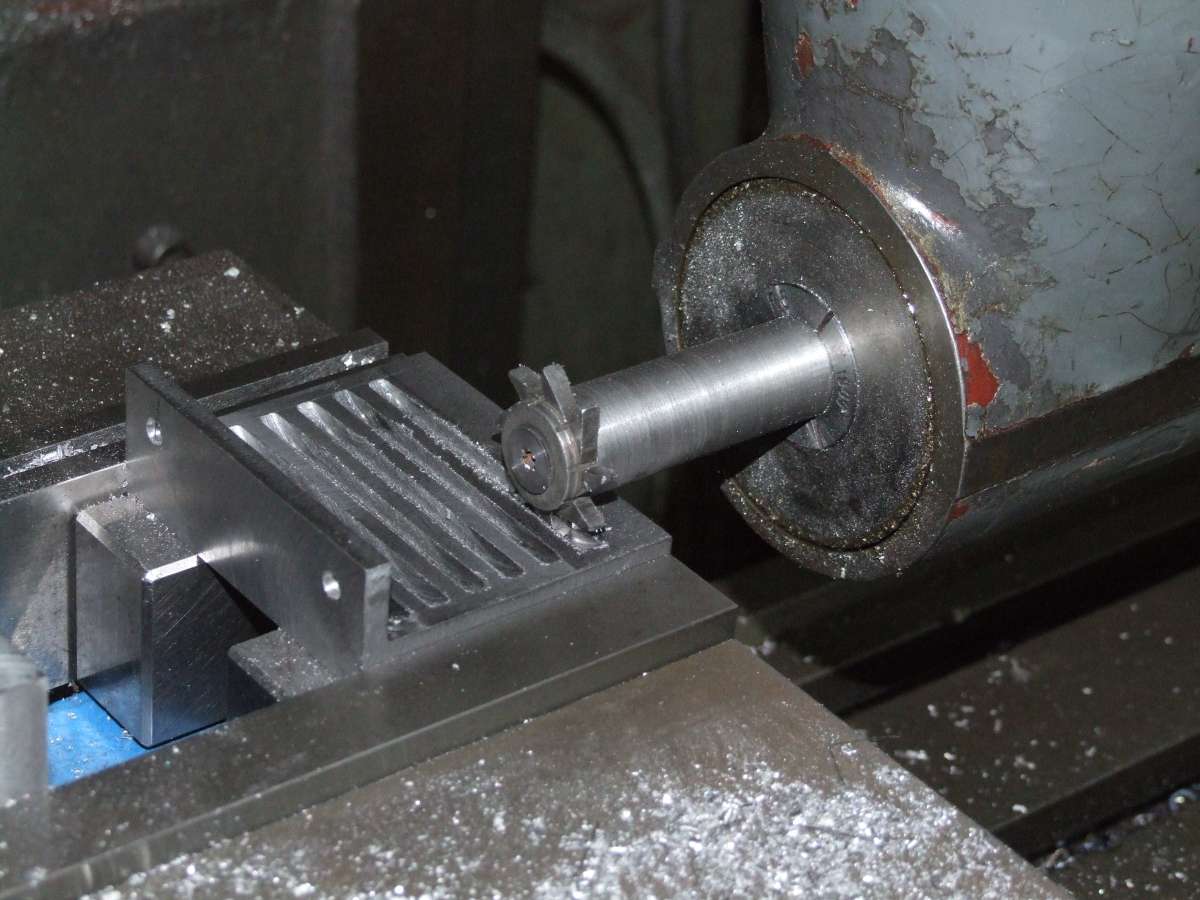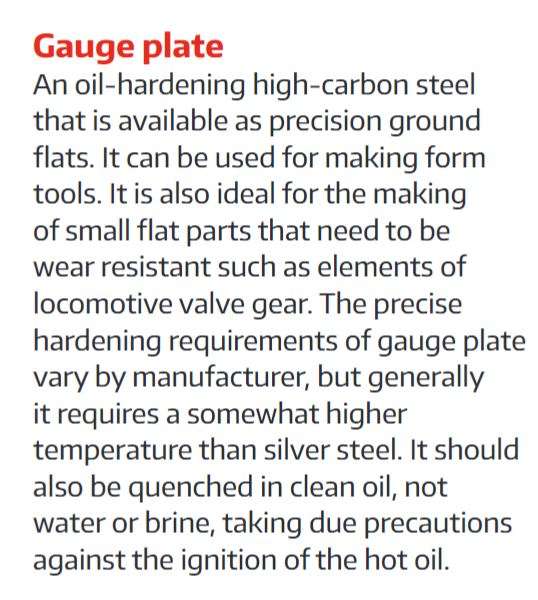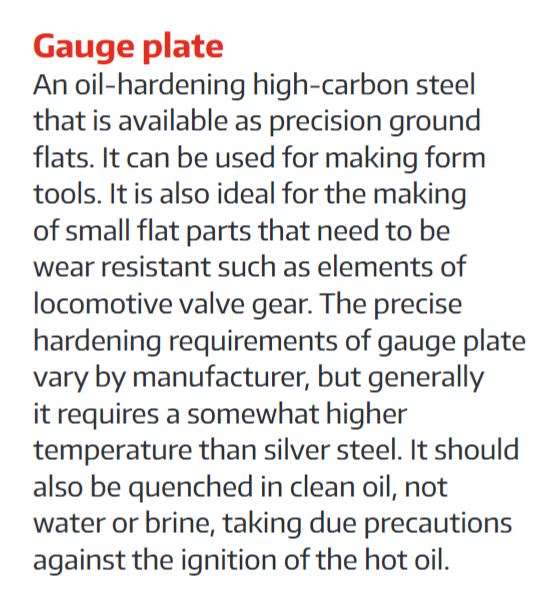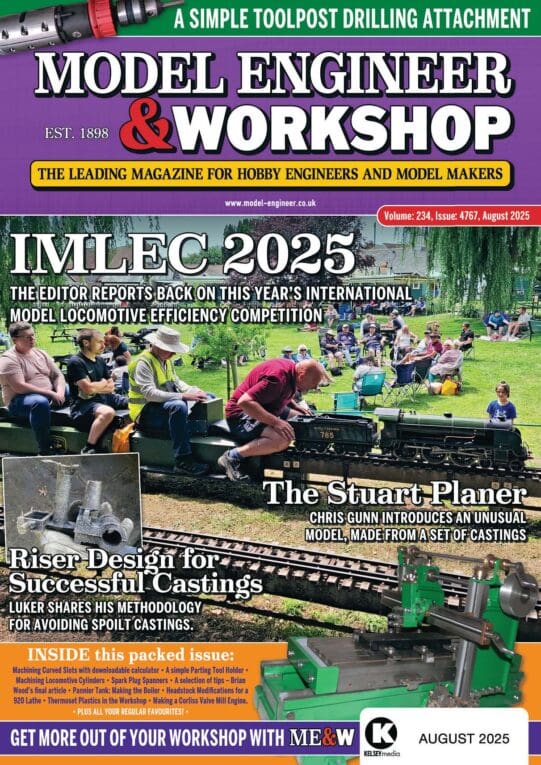Avoid Carbon Steel on any machine tool made after about 1900. Although hard and easy to sharpen, it softens at remarkably low temperatures, about 200°C, and goes blunt in a blink when overheated. OK for cheap tools, especially DIY woodwork, but even for woodwork HSS tools are a better bet.
HSS is not only tougher than Carbon Steel, but – most important – it resists softening up to about 500°C, making it much better suited to cutting metal without having to stop and resharpen frequently. When HSS was first introduced, the old boys weren’t keen to adopt such new-fangled rubbish, not least because HSS couldn’t perform on well on spindly Victorian lathes lacking in power and rigidity. They claimed Carbon Steel can be ground sharper than HSS, which might be true, but that didn’t stop a suitably heavy machine fitted with HSS being 5 or 6 times more productive than carbon-steel cutters.
Carbide was the next advance. It has a similar 5 to 6x advantage over HSS, basically because it can take a lot more heat without softening.
So cutting speed depends on the material and on what the cutter is made of. In a production setting, speed and efficiency very much favour carbide, run at high-speed, on a rigid powerful machine, and taking deep cuts with a high feed-rate. Carbide isn’t suitable for everything though, so HSS remains popular. HSS does a good job, but the cutting speed has to be reduced compared with carbide. Likewise, using Carbon Steel rather than HSS means cutting speed has to be drastically reduced again. A Carbon Steel cutter run at HSS speeds soon fails.
On a hobby machine, HSS keeps it simple. Many of the older classic machines don’t have enough RPM to get the best out of carbide, and even though most far eastern machines are faster, they too are on the slow side for carbide.
Duffer method, which gets me in the right ball-park, is roughly thus.
A good approximation for cutting mild-steel with HSS is rpm = 10000 / diameter of job (or drill) in millimetres. This speed is also suitable for Bronze, Soft Cast Iron, and Copper.
Aluminium Alloys cut 3x faster than mild-steel
Brass and Free-cutting steel cut 2x faster than mild-steel
Stainless, Cast and Silver steel cut ½ as fast as mild-steel
Hard Cast Iron cut ⅓ as fast as mild-steel.
Having set the rpm by formula and above, I take an experimental cut. It’s only the first step because a great deal depends on the exact material, and on the cutter, how rigid / powerful the machine is, how solid the work-holding, and whether coolant / lube is used. In practice, I rarely change the RPM, instead tuning for best finish and progress by altering the depth of cut and feed-rate for best results on my machine. If the machine has fixed speeds set to the nearest, and again tune by altering the depth of cut and feed-rate for best results.
I mostly use carbide, in which case I do the sum above as if for HSS, then multiply the RPM by 2 or 3.
The cutting advice in books and on the web is aimed at production engineers who must maximise efficiency. Production speeds are usually too fast and brutal for hobby and jobbing workshops.
The optimum cutting rate for a particular alloy depends on it’s internal structure, and massive amounts of information about that are available if need be. But, bearing in mind the limitations of my hobby equipment, I’ve not found it necessary to do more than apply the rule of thumb approach described above. The answer it produces is mostly ‘good enough’, and if it’s not, tweaking DOC and Feed-rate generally fix it. Occasionally, I fail to get a good finish from carbide, usually fixed by switching to HSS and slowing down, but some alloys are pigs!
Dave
Anonymous.















